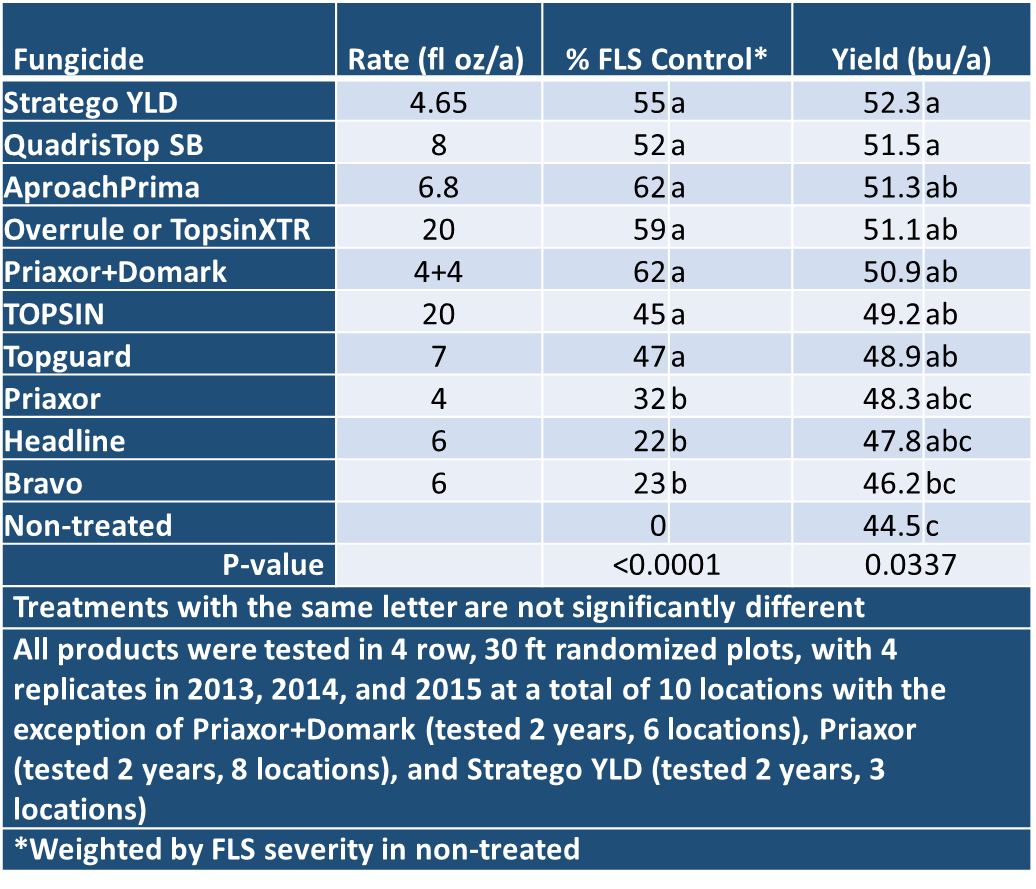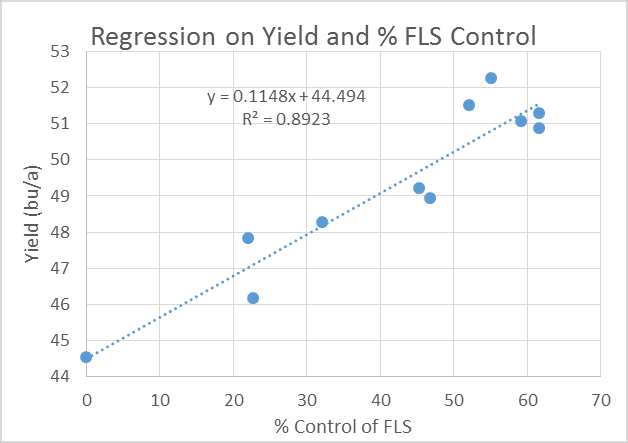To determine if a disease will become a significant PEST, that will effect yield, four main factors need to be considered…
- Pathogen presence – can be influenced by field history
- Environment – the right conditions for disease to develop
- Susceptible host – a variety that is susceptible to disease
- Time – regarding the growth stage of the plant and when the disease develops
Scouting for and correctly identifying disease during soybean reproductive growth stages is critical to determine how necessary a fungicide application may be in protecting yield from disease. Some diseases have characteristic symptoms that are easily identified, where others may not be specific and may be mistaken for weather or chemical damage (see previous article Distinguishing Disease from Chemical Injury in Soybean). Entire plant samples should be examined and when needed can be taken to your local extension county agent for identification.
Some common soybean diseases found in Tennessee include Frogeye Leaf Spot, Septoria Brown Spot, Cercospora Blight, Anthracnose, Southern Stem Canker, Charcoal Rot, and Sudden Death Syndrome. Descriptions of symptoms, pictures, and management options for these and other soybean diseases can be found at UTCrops.com (Soybean Disease and Nematode Identification Field Guide). Many diseases can be avoided by planting a disease resistant variety, regularly rotating to non-host crops, and when warranted fungicide applications can be applied. UT research has previously indicated that under circumstances of high disease pressure and conducive environmental conditions, timing a fungicide application at R3-R5 (beginning pod develop to beginning seed development) often provides the most consistent yield protection.
A foliar fungicide efficacy table (Soybean Fungicide Efficacy Table found at UTCrops.com) is developed by The North Central Regional Committee on Soybean Diseases (NCERA-137) and modified as needed by each state to provide information on foliar fungicide efficacy for control of major foliar soybean diseases. The table lists major soybean diseases and rates the different fungicides efficacy for each disease. Below and on UTcrops.com are summarized data from 2013-2015 Frogeye Leaf Spot field trials using FLS susceptible varieties.
Using the same data set, there is a strong correlation between percent FLS control and yield, as illustrated in graph below.
With the identification of Frogeye Leaf Spot disease caused by strains of Cercospora sojina resistant to fungicides in the quinone outside inhibitor (QoI or commonly referred to as strobilurin) group in Tennessee since 2010, it is recommended to use a fungicide that has a mixed mode of action or one that is not a sole QoI/Strobilurin product. Free testing will be conducted this year to determine if Frogeye Leaf Spot disease in a field is caused by QoI/Strobilurin fungicide resistant strain of C. sojina (funding for testing provided by the Tennessee Soybean Promotion Board). To have a sample tested please send at least 20 symptomatic leaves with sporulating lesions and a sampling form filled out to:
WTREC, Lab C
605 Airways Blvd.
Jackson, TN 38301
Attn: Frogeye Leaf Spot Samples
Leaves with FLS symptoms should be placed in a sealable plastic bag and mailed overnight or as soon as possible. Leaves should be kept in a cool, dark place until mailed. More information and pictures of Frogeye Leaf Spot and how to sample can be found at UTCrops.com (Frogeye Leaf Spot Information and Directions for Frogeye Leaf Spot Samples). If you have any questions contact Heather Kelly (731-425-4713 or youngkelly@utk.edu).



